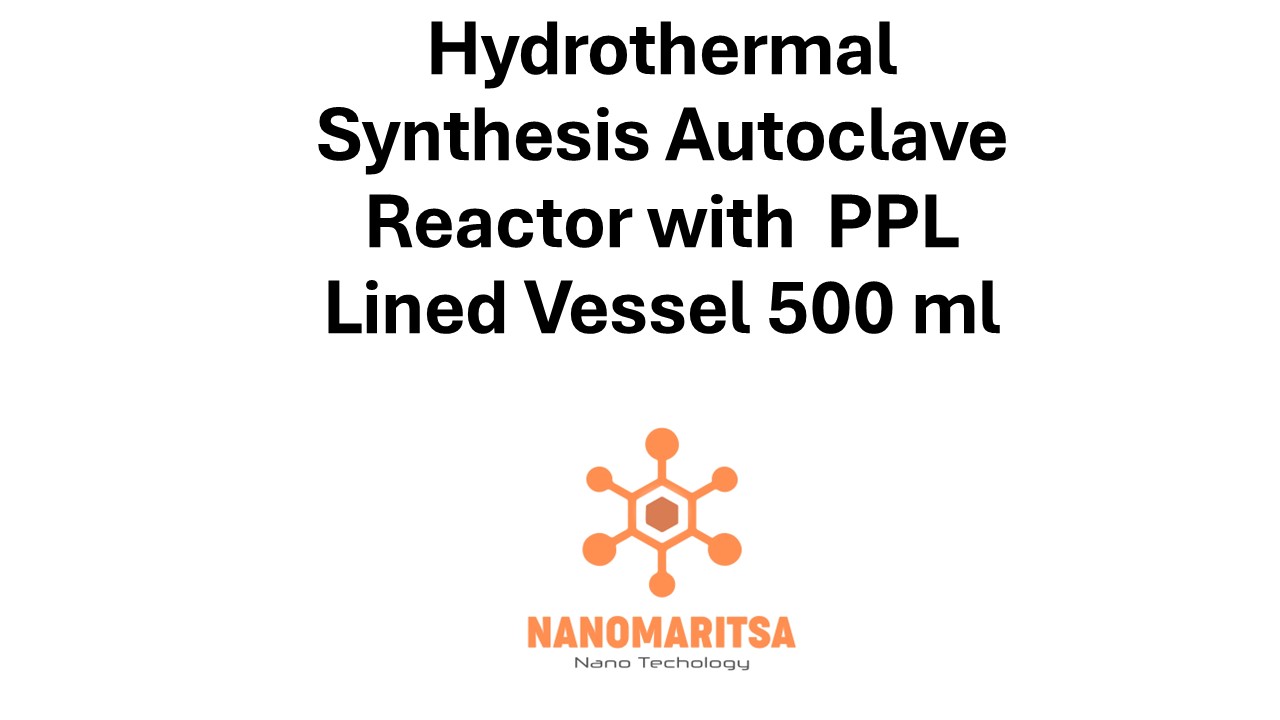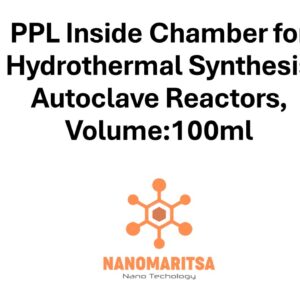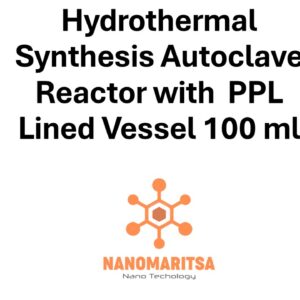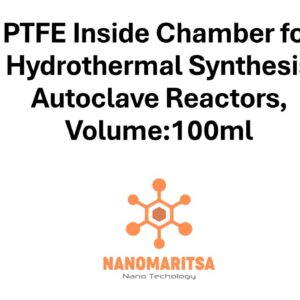Hydrothermal Synthesis Autoclave Reactor with PPL Lined Vessel 500 ml
€800.00
CompareHydrothermal Synthesis Autoclave Reactor with PPL Lined Vessel (500 ml) is a laboratory device designed for conducting hydrothermal synthesis reactions under high pressure and temperature conditions. It is used to synthesize various materials, including nanomaterials, crystals, and advanced composites, by subjecting them to controlled environments that simulate natural geological processes. Here is an overview of its key features, properties, applications, and safety considerations:
1. Key Features:
- PPL Lining: The reactor has a PPL (Polyphenylene Sulfide) lined vessel, which provides superior chemical resistance to acids, bases, solvents, and other corrosive substances. This makes it an ideal choice for hydrothermal synthesis, where harsh chemicals and high temperatures are often involved.
- Volume (500 ml): With a 500 milliliter (ml) capacity, this reactor is suitable for moderate to large-scale synthesis experiments, allowing for higher reaction volumes compared to smaller reactors, making it suitable for research, development, and small-scale industrial applications.
- Pressure and Temperature Resistance: The reactor is capable of withstanding high-pressure (200-300 bar) and high-temperature (150°C to 250°C) conditions, which are essential for hydrothermal synthesis processes.
- Sealed Environment: The PPL-lined vessel is securely sealed, ensuring that pressure and temperature are maintained throughout the reaction process. The sealing also prevents leaks and maintains safety during operation.
2. Properties:
- Chemical Resistance: The PPL lining is highly resistant to a wide range of aggressive chemicals, ensuring that the vessel does not interact with or contaminate the chemicals inside. This ensures high purity in the synthesized materials.
- Thermal Stability: PPL can withstand temperatures up to 250°C without degradation, ensuring that the reactor can handle the elevated temperatures typical of hydrothermal reactions.
- Mechanical Strength: The PPL lining provides the necessary mechanical strength to withstand high-pressure conditions without compromising the reactor’s integrity.
- Non-reactivity: The PPL material does not react with most chemicals, ensuring that the reactions inside the vessel are not influenced by the container material, which is crucial for the quality and consistency of the synthesized products.
3. Applications:
- Nanomaterial Synthesis: This reactor is commonly used for the synthesis of nanoparticles, nanowires, quantum dots, and other nanostructures. The high-pressure and high-temperature environment encourages the formation of nanomaterials with specific properties, such as high surface area or unique electronic characteristics.
- Crystal Growth: Hydrothermal synthesis is an effective method for growing high-quality single or polycrystals. The reactor is ideal for growing crystals of metal oxides, semiconductors, and other inorganic materials used in electronics, optics, and energy storage devices.
- Catalyst Development: The reactor can be used to develop new catalytic materials or modify existing catalysts. The high pressure and temperature can enhance the catalytic properties of materials, making them more efficient in chemical processes.
- Energy Materials: The reactor is useful for synthesizing materials for energy storage, such as electrodes for batteries and supercapacitors, as well as materials for fuel cells. These materials benefit from the controlled environment provided by the reactor, which can fine-tune their properties for energy applications.
- Environmental Applications: The reactor can also be used for synthesizing materials for environmental purposes, such as catalysts for pollution control, water purification, and advanced filtration materials.
- Advanced Ceramics and Composites: The reactor is ideal for synthesizing advanced ceramics, composites, and other materials used in industries such as aerospace, automotive, and electronics, where high-performance materials are required.
4. Handling and Safety:
- Toxicity and Corrosiveness: Some chemicals used in hydrothermal synthesis can be toxic, corrosive, or reactive. It is important to ensure that the chemicals used in the reactor are compatible with PPL and to handle them with care.
- High Pressure and Temperature Safety: The reactor operates under extreme pressure and temperature conditions, which can pose risks if not handled properly. It is essential to follow safety guidelines, including checking the integrity of the reactor before each use, ensuring it is properly sealed, and using the appropriate pressure and temperature controls.
- Storage: After use, the reactor should be cleaned thoroughly to remove any residual chemicals. It should be stored in a cool, dry place, away from direct sunlight and extreme temperatures, to maintain the integrity of the PPL lining.
- Precautions: Always use personal protective equipment (PPE) such as gloves, goggles, and lab coats when handling the reactor. It is also essential to operate the reactor in a well-ventilated area or under a fume hood, particularly when working with volatile or hazardous chemicals.
Summary:
The Hydrothermal Synthesis Autoclave Reactor with PPL Lined Vessel (500 ml) is an essential tool for conducting hydrothermal synthesis reactions at a moderate to large scale. Its PPL lining provides excellent resistance to corrosive chemicals and ensures a non-reactive environment for high-quality material synthesis. The reactor is capable of operating under high-pressure and high-temperature conditions, making it ideal for the synthesis of nanomaterials, crystals, catalysts, and advanced energy and environmental materials. Its 500 ml capacity is suitable for both research and small-scale production in various industries, including materials science, nanotechnology, and energy storage.
| Pieces | 1 Piece, 5 Pieces |
|---|






